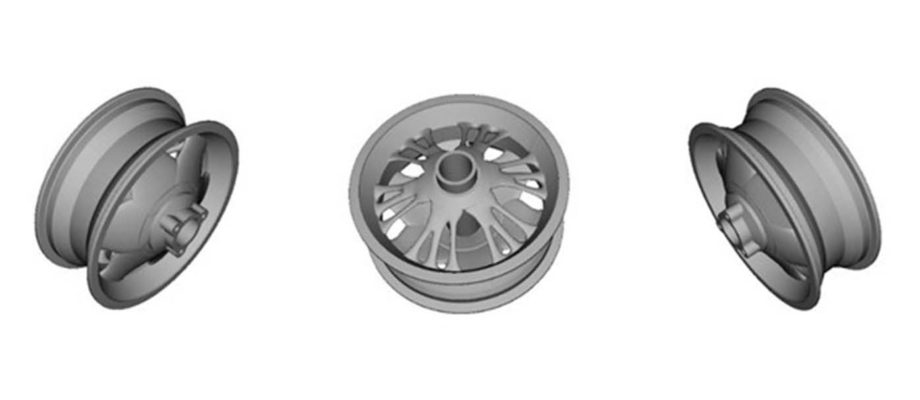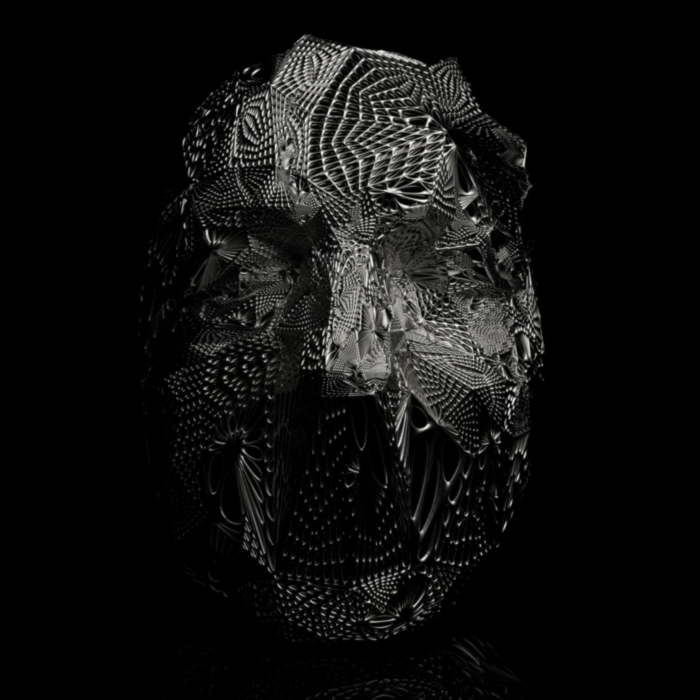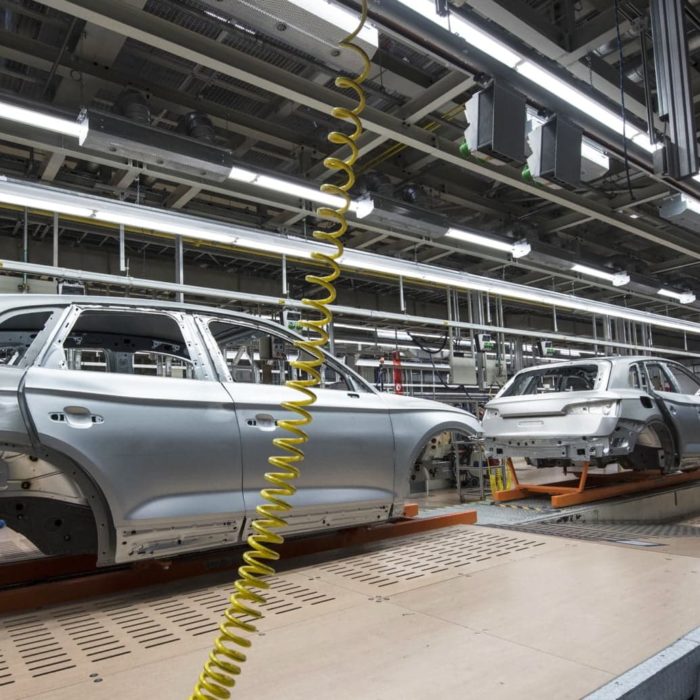Challenge: To make a front wheel for the Blata 2.6 racing minibike at one-third the weight while maintaining stiffness and strength.
The solution: Lighter motorcycle rim in an impressive and functional design with high stiffness and maximum use of material properties.
Impact:
- Up to 2/3 less weight while maintaining the same rigidity as a standard aluminum wheel
- Cheaper and faster production than the composite option using carbon fiber
- Very low material waste compared to conventional production – excess powder can be recycled more easily and quickly and reused
- Reduce CO2 emissions in production by up to 19%
Result: 2.5 times lighter weight while adhering to similar material properties as the factory aluminum wheels of world manufacturers (Blata, Polini, DM).
Service: Rapid prototype production
Material: PA3200GF
Technology: Selective Laser Sintering
Post-processing: Wet coating
Topological optimization – material only where necessary
Topological optimization is a software-controlled process of improving shape elements while adhering to safe stresses at all points of the product material, creating a completely new product design where the material is retained only where significant loads are transferred.
Using advanced computer methods and simulations, we can maintain the original rigidity and bearing capacity of the part while reducing its weight.
The resulting organic shape is very difficult to produce using conventional manufacturing methods.
Some shapes can’t be produced conventionally at all. Additive manufacturing comes in, pushing the limits of manufacturability a step further.
Thanks to topological optimization, we can make the shape as light as possible while keeping the required properties. This is a powerful and effective tool for innovation and technical shift.
Read more about topological optimization in Topological optimization and generative design.
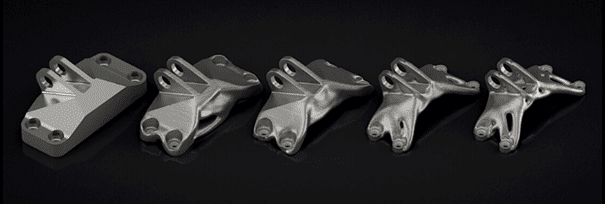
- Topological optimization of parts. Source: PTC.com
For the production of the front wheel, we chose SLS – Selective Laser Sintering technology.
Production is done by applying a powder material to the production platform, which is laser sintered at the desired points. After baking, the platform is moved lower and another layer of powder is applied and the process is repeated.
The advantage of SLS is that there is no need to add supports to the product and it is also possible to place several parts on top of each other. The production time (sintering) normally runs from 5 to 20 hours.
This is influenced, however, by the total number of products in the frame as well as their complexity.
From assignment to printed prototype in a few days: If it’s a race, we start from the pole position
The pole position, or the first starting place. In the field of fast custom production, we strive to stay ahead of the competition and be as flexible as possible for our customers.
From the receipt of the necessary data through its inspection and subsequent entry into production, the wheel was produced in 3 days.
“I approached ONE3D at the last minute. To my surprise, I received the disc in a ready-to-paint condition in less than three days. Hats off to this performance and thank you for your lightning fast cooperation.”
Ing. Jakub Šmiraus, Ph.D., member of the VŠB-TUO research teamResearchers from VŠB-TU Ostrava then tested the wheel and presented the results at the International Engineering Fair MSV Brno 2021.
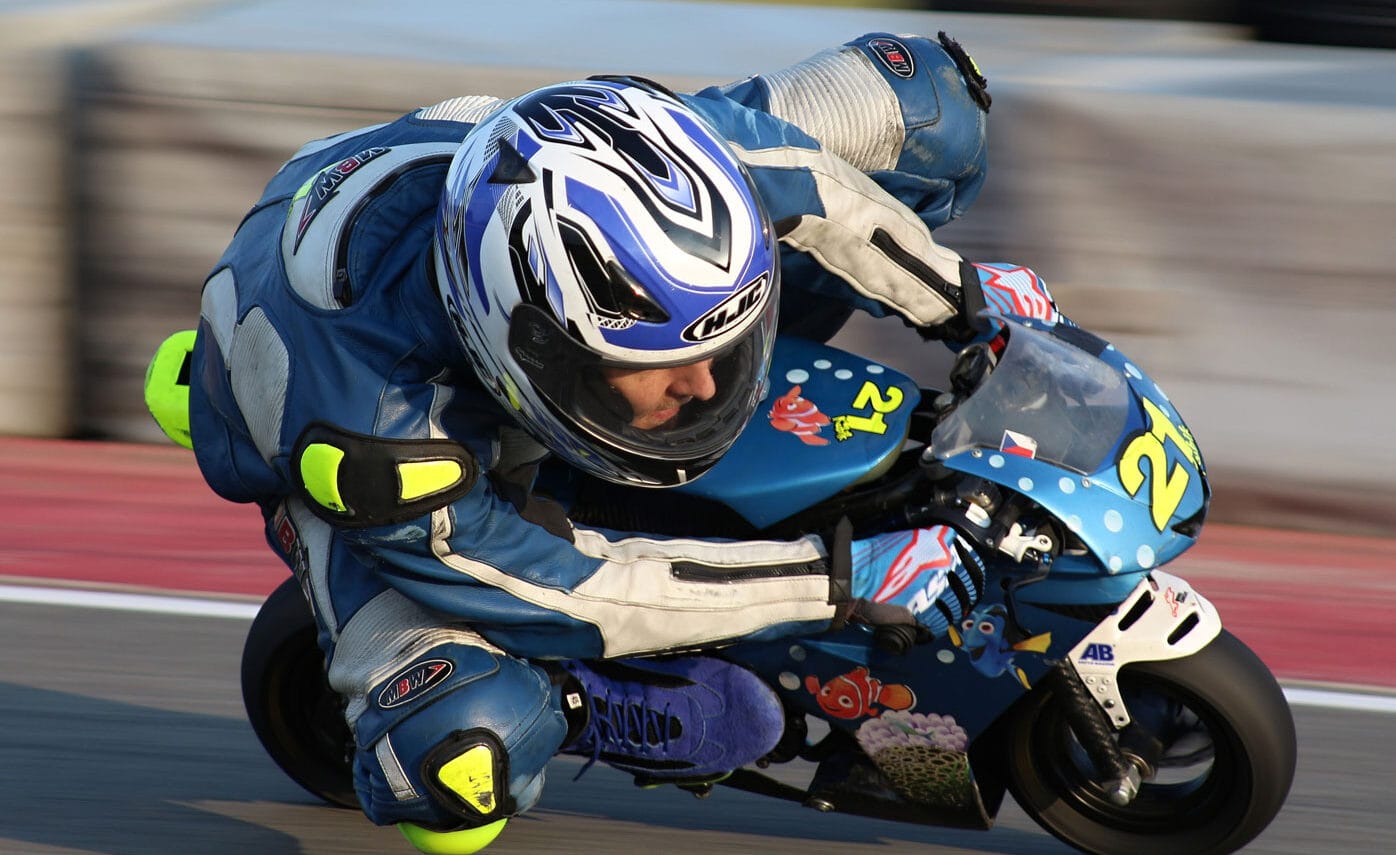
Manufacture the unmanufacturable? Let’s do it.
Nowadays, motorcycle wheels are most often made either of wire (similar to a bicycle) or of aluminum alloy (Dural), usually cast into molds or produced very expensively using CNC machining technology.
Using CNC technology, design options are few. There are accessibility limitations for the cutting tool, and at the same time, the material waste rate will be high.
This technology is not suitable for the development of new designs.
Another material that can be used for manufacturing is carbon fiber.
This, although very light and strong, poses a certain risk of brittleness.
Imagine the forces applied to the wheels when you hit a speed bump on a circuit
at high speed.
Carbon fiber pushes the boundaries of manufacturability further, however, a specific mold needs to be produced. However, designers still remain limited in shape.
Carbon fiber also means much higher manufacturing costs and thus a higher cost for the customer mainly due to the technological complexity and cost of mold making.

Additive manufacturing in the context of topological optimization fully covers the disadvantages of conventional manufacturing methods. Designers are not limited in shape while being able to produce the final product in a matter of days. While metal filings need to be remelted to form new sheet metal, additive manufacturing powder can be reused in a matter of hours.
Last but not least, we can also talk about greener production of motorcycle wheels, with up to 80% less emissions emitted into the atmosphere than CNC production.
Additive technology is more sustainable, which is currently the way to go.



